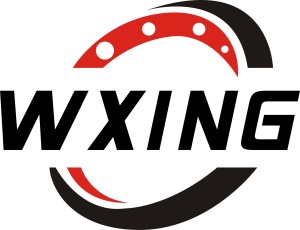PRODUCT
ToughMet 2 alloy wear resistance
by:Waxing
2020-11-16
ToughMet 2 abrasion resistance of alloy 2020 -
10 -
24 measured ToughMet 2 alloy and the other two kinds of copper alloy compared with the 4140 steel wear resistance.
ToughMet 2 alloy in three kinds of wear and tear have the greatest resistance to deformation in the alloy.
Introduced in tempering to HRC 35 of 4140 steel, measured by three kinds of resistance to abrasion and wear of copper base alloy threshold stress.
These tests is to provide relevant application in wear plate and bushing wear ToughMet 2 alloy in the relative information.
Used in the comparison test of copper alloy, C95400 and C95900, is commonly used in the application of these alloys.
Used to measure the test method, ASTM G98, provides a threshold, the scratch will happen below this threshold.
Many wear plate design is a combination of lubrication, such as graphite or graphite.
Eventually, the failure mechanism of the lining sleeve for the metal plate, or is the adhesive wear of copper alloy, and the adhesive wear and tear is due to the destruction of the lubricant on the wear track and erased.
Used for the test of wear measurement method to simulate the adhesion wear, and to determine the maximum working load of alloy under the conditions of use.
Process materials using C95900, C95400 and ToughMet 2 alloy wear tests have been carried out.
C95400 received by Thyssen C95900 and ToughMet 2 alloy obtained by Materion properties of alloy.
The tensile properties of the alloy is unclear.
Hardness value in R&
D to measure, listed in table 1.
Cooperate with test material 4140 tempering to hrc35.
Wear surface is Ra 12 to 16 & mu;
In manual (after polishing processing
0.
3 to 0.
4μ
m)
。
Under the condition of polishing on the surface of the copper alloy and steel piece was tested.
Tests of abrasion resistance measurement was conducted in the heron test lab.
Sample preparation and testing procedures in accordance with ASTM G98 -
911.
This test method has been used for copper, iron and other non-ferrous alloy material performance characterization.
In all of the tests, the slider is 4140 steel, one of the copper alloy is no lubrication.
Use Instron mechanical test unit applied stress, add 10 at the beginning of ksi (
69 MPa)
。
For copper button for visual inspection, to determine whether the button scratch or deformation.
Friction resistance were reported as without friction or button the minimum stress deformation were observed.
The results and discussion before button deformation test was not observed in the copper alloy with 4140 steel wear.
Test failure criteria, therefore, is not worn, but the observed deformation stress.
These results are listed in table 1.
In the test of 4140 alloy, there is no any kind of observed scratch (
Metal transfer)
。
Therefore, abrasion threshold is defined as the stress of observed deformation of copper alloy.
Based on button deformation stress, before failure, 2 alloy under the highest load.
C95900 overtook ToughMet 2 alloy, and the deformation and stress of C95400 is low, about 30 ksi.
These results with the hardness of materials, low abrasion stress and low hardness.
Other copper alloy wear (
Deformation)
Stress is about 0.
2% 80% of yield strength.
Using this formula to calculate the C95400, C95900 and ToughMet 2 alloy yield stress of 56 ksi and 94 ksi respectively.
In the case of the hardness of report is hrc30, ToughMet 2 alloy to calculate the yield strength within the expected range.
Conclusion 1.
The test of copper alloys did not happen before deformation wear.
2.
The destruction of the sample is defined as the deformation, and about 80% of the yield strength of copper alloy.
3.
Determined the biggest 2 alloy deformation resistance, followed by hardness C95900 similar to it.
C95400 lowest deformation resistance.
(
Quanta technology co. , LTD. )
Custom message






























































































